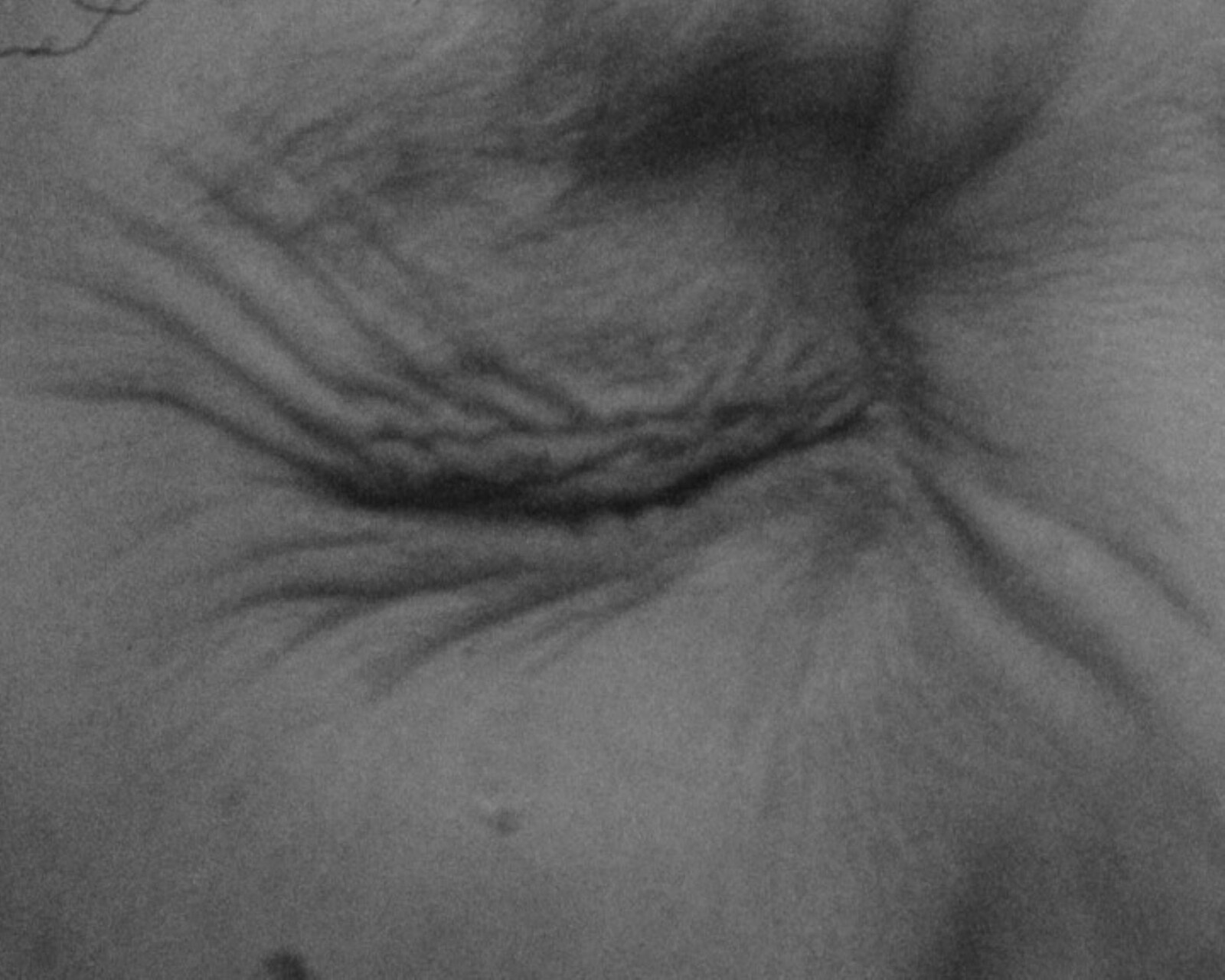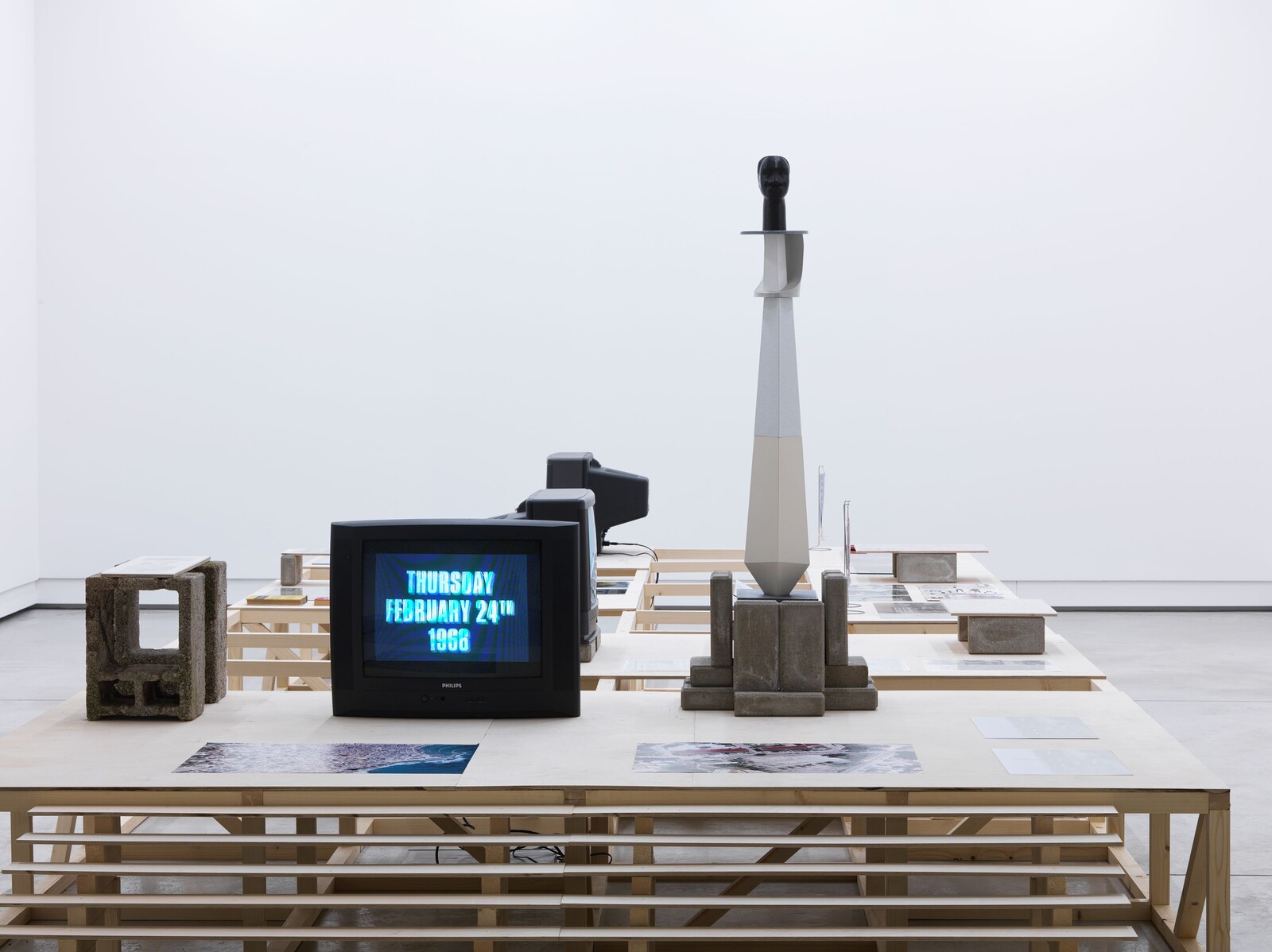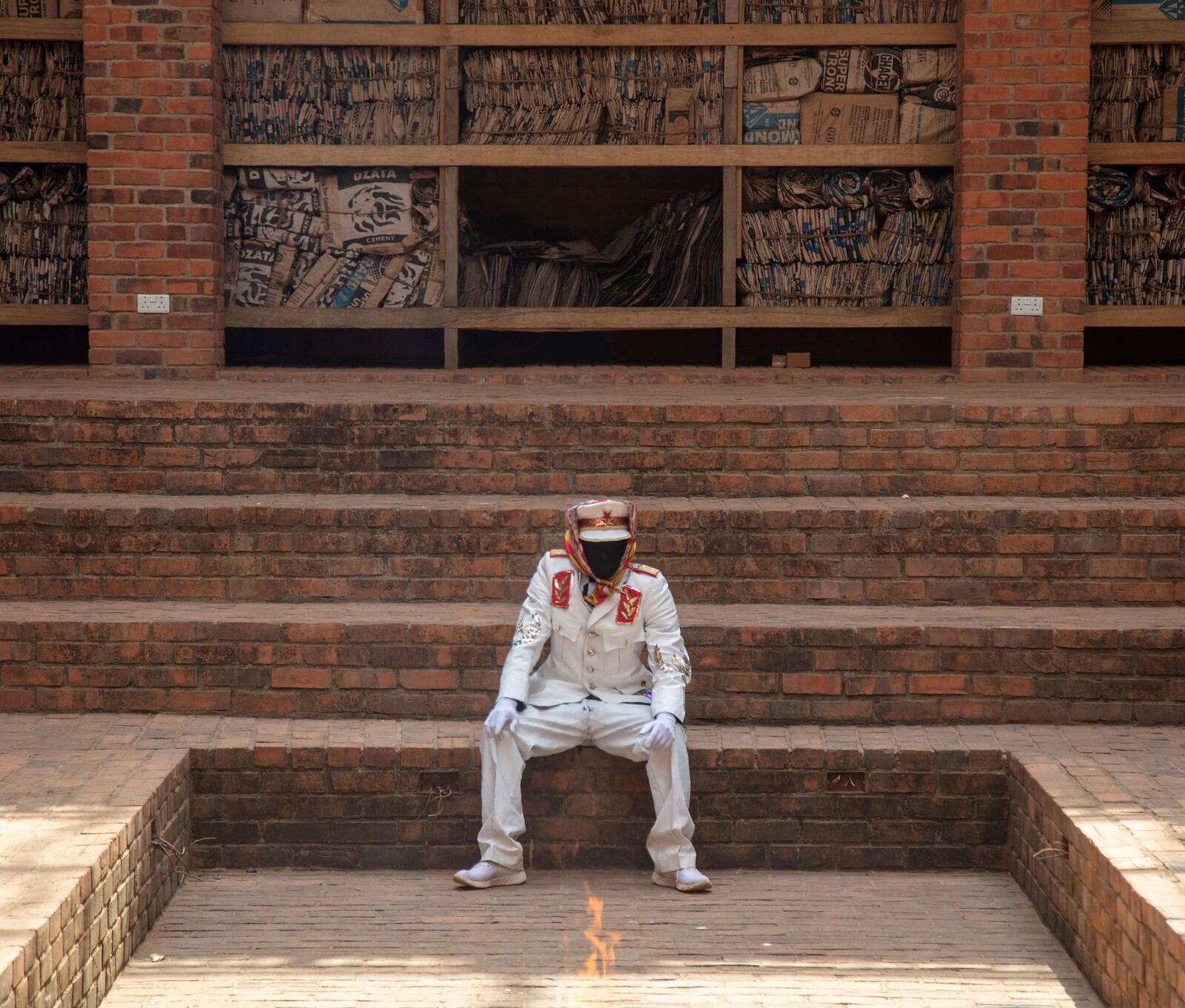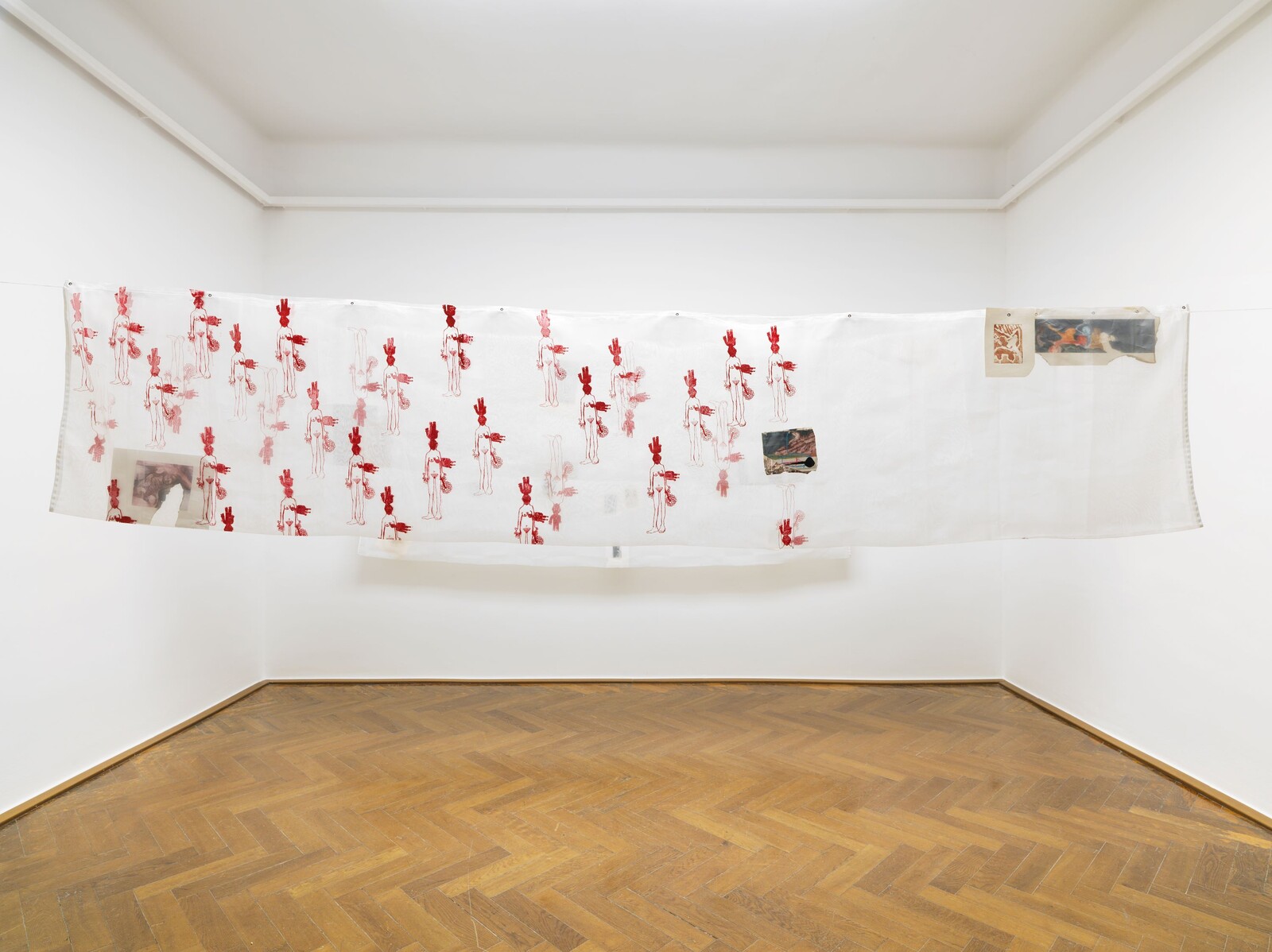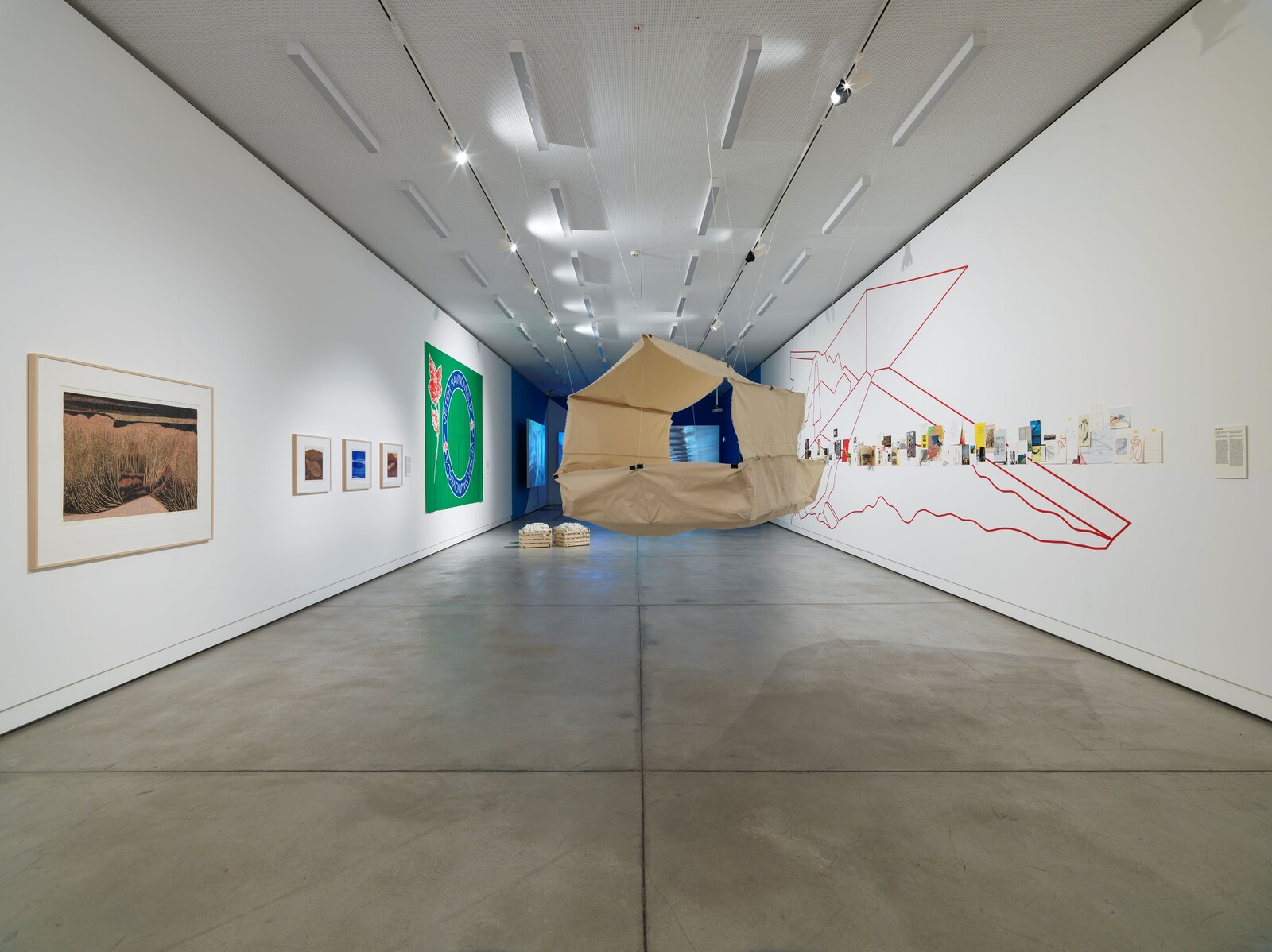When Ibrahim Mahama agreed to serve as artistic director of the 35th Ljubljana Biennale of Graphic Arts, he sought inspiration on a domestic scale. The simple conceptual sketch he prepared for this edition—titled “from the void came gifts of the cosmos”—shows a rudimentary bedframe, with a few unidentified objects stashed underneath. This curatorial approach attempts to reclaim an everyday architectural recess from the realm of monsters and recognize it instead as a space of potential. But dark things come from under the bed, the darkest of which may be nothing at all.
Mahama applies the metaphor of the void not only to architectural and ideological infrastructures, but also to emancipatory movements that operate within structures of colonial domination. Chief among these is the Non-Aligned Movement: a political experiment that rejected the either/or imperialism of the Cold War era in favor of a multilateral understanding of the world. Its foundations were laid at the Bandung Conference in 1955, the same year that the Ljubljana Biennale of Graphic Arts launched. Fresh from its split and subsequent rapprochement with the USSR, Yugoslavia offered a meeting ground for representatives from both sides of the Iron Curtain, and the biennial was expressly crafted to strengthen these transnational ties, using a medium—graphic arts—that was cheap and easy to transport or reproduce.
It’s a rich, almost readymade context for Mahama and his curatorial team: Patrick Nii Okanta Ankrah, Selom Koffi Kudjie, and the Exit Frame Collective, all of whom have previously collaborated with Mahama on initiatives in Ghana; Beya Othmani, who honed her skills researching in Germany and Tunisia; and Inga Lāce and Alicia Knock, a duo who last fall co-organized “Long-distance Friendships,” a re-examination of border-hopping solidarities split between the Kaunas Biennial and Riga’s Survival Kit. This ensemble works together to keep the emphasis on cultivating potential, but in this clearing of hierarchies, the exhibition also stakes its legibility. To its credit, it incorporates a number of intriguing off-sites in Ljubljana, including a worker’s canteen styled as an autonomous zone; a print studio dedicated to collective organizing; and Krater, a project space in an abandoned construction site. But within the headquarters at the International Centre of Graphic Arts, one feels the drawbacks of voids as organizing principles.
The walls of the central stairway are spotted with clusters of locked key boxes: Kvadratni meter’s Self Check-in (2023), which continues the collective’s critique of the gentrification of the Slovenian capital (this element of urban safari is echoed, at the Cukrarna gallery, by Manca Žitnik’s photographic typology of architectural “add-ons.”) On the first-floor landing, a monitor plays Christian Guerematchi’s Črni Tito-Blaq Tito Addressing the Parliament of Ghosts (2022). The film follows the artist, his face swathed in pantyhose in a burlesque of Josip Broz Tito, as he stages a state visit to Mahama’s monumental 2019 installation Parliament of Ghosts, now in Tamale, Ghana. The footage is intended to haunt, though it’s never quite clear whom. (In one interlude, the protagonist pulls at the nylon covering his nose before breaking down into the refrain “I can’t breathe,” evoking the murder of George Floyd and the ensuing Black Lives Matter protests.)
The next gallery pairs Virginia Chihota’s gossamer assemblages on silk mesh with a series of small photographs pinned to the opposite wall. An explanatory note identifies these images as installation views of an exhibition on solidarity staged at the Museum of Modern and Contemporary Art Koroška in Slovenj Gradec, an hour north of Ljubljana. More documentation from this exhibition can be found in a vitrine in the next room, which faces off against Temitayo Ogunbiyi’s You Will Recall Dr. Bruce in a Good Morning (2023), a cross between a printmaking studio and an installation, erected in tribute to the greeting card manufacturer behind a renowned print workshop in Lagos. This all too literal emphasis on graphic work extends into a display of assorted prints sourced from historical editions of the biennial. The guidebook designates this section as “Friendships and Affinities,” but with no indication of this framework within the space itself, the viewer is left to puzzle out the possible relationships between Estonian master Tõnis Vint’s lithograph White Landscape 1 (1972) and etchings by Indian practitioners Lalitha Lajmi and Krishna Reddy. The Centre’s long network of galleries ends with Tracy Naa Koshie Thompson’s Kanzo Series (2023), scrupulous (and humorous) forays into the world of 3D printing.
Wildly varying in scope, format, content, and context, these works all peacefully coexist because they are fairly well-behaved: Guerematchi aside, they do not make particularly exacting demands of their audience. But proximity does not equal affiliation. In the absence of any overarching discursive framing (at least on-site), the onus of searching out rationale or resonance lies solely on the viewer. Some might argue that this allows for exactly the kind of potential Mahama and his team want to foster, but there is a difference between planting seeds and scattering them.
At Cukrarna, many of the works are productively connected by a shared interest in Kwame Nkrumah (1909–72), Ghana’s first president and a co-founder of the Non-Aligned Movement. The long shadow he casts on the biennial is literalized in Max Cegielski and Janek Simon’s One Man Does Not Rule a Nation (2023), an archival installation that tracks the life cycle of a monument to Nkrumah: from the commissioning of the Polish sculptor Alina Ślesińska, to the sculpture’s unveiling in 1965 and its demolition the following year, after Nkrumah was deposed by a CIA-backed coup.
Of course, even with Nkrumah as muse, the exhibition does not present transnationalism as a monolithic virtue. The selected video archives of Ilona Németh’s Eastern Sugar Archive, from 2017 (2023) track the demise of Central Europe’s sugar industry, while Tjaša Rener’s The Place We Call Home (2023)—an installation centered on a Slovenian woman who emigrated to Ghana—gets mired in the minor indignities of bureaucracy. A standout of the show is Yasmina Benabderrahmane’s gripping multimedia installation La Bête, a Modern Tale by Yasmina Benabderrahmane (2020), which tabulates the unseen costs of starchitecture, through the parable of Zaha Hadid’s Grand Théatre de Rabat, a 1800-seat amphitheater in Morocco. Against the ecological devastation wrought by the vanity project—“a beast that swallowed up the water from the desert”—the various screens linger on the contrasting textures of everyday life: cracked hands working dry soil, wet laundry hung on a wire, rosary beads run between thumbs, flesh falling off a bone.
For an exhibition that prides itself on avoiding didacticism, the strongest contributions in “from the void came gifts of the cosmos” are its most discursive, both in the elegant and ambitious reader and in the public symposium “Agyina: Advisory of Sages,” modeled by Exit Frame Collective after the idea of plural authority. These formats lend themselves to multiplicity, with a pacing that allows each voice to be heard in turn on equal terms (a luxury never guaranteed within an exhibition space). Overall, however, this biennial prioritizes potential at the cost of coherence, convening a parliament with no official agenda—a welcome but risky endeavor.

